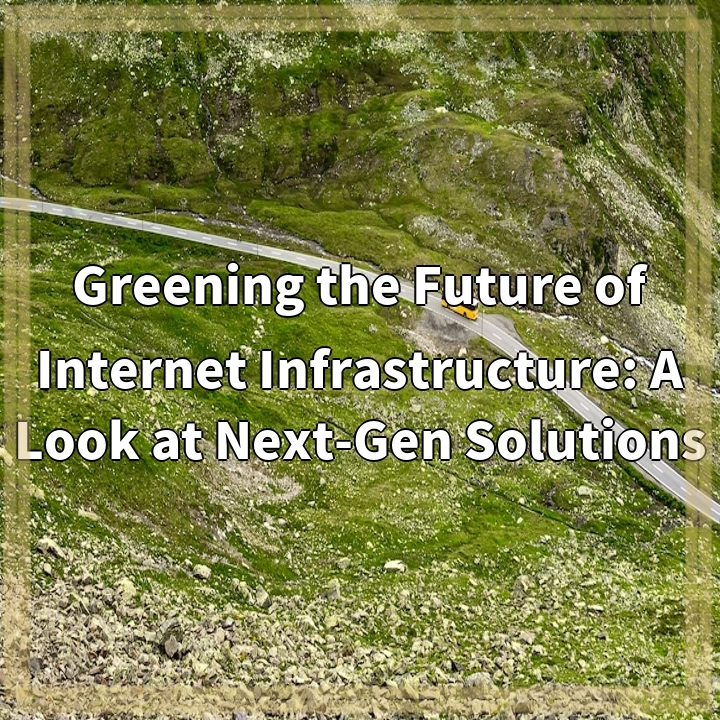
What it is:
The future of internet infrastructure is being shaped by the need for sustainability and environmental consciousness. Next-gen solutions are emerging to address the energy consumption, carbon footprint, and resource depletion associated with traditional internet infrastructure.
Real-World Problems:
1. Energy Consumption: The current internet infrastructure, including data centers, servers, and networking equipment, consumes vast amounts of energy. This leads to a significant carbon footprint, contributing to greenhouse gas emissions and climate change.
2. Resource Depletion: The production of electronic devices and infrastructure components requires the extraction of precious metals and minerals, depleting finite resources. This mining process often leads to habitat destruction, pollution of local ecosystems, and displacement of communities.
3. E-Waste: The rapid turnover of electronic devices and constant upgrades result in a significant amount of electronic waste. Improper disposal of electronic waste leads to environmental contamination from toxic materials like lead, mercury, and cadmium.
4. Heat Generation: Data centers generate immense amounts of heat, requiring extensive cooling systems that consume even more energy. This creates a vicious cycle of energy consumption and environmental impact.
5. Digital Divide: Building and maintaining traditional internet infrastructure can be costly, resulting in limited access to internet services in underserved regions. This lack of digital connectivity exacerbates existing inequalities and hinders socio-economic development.

Solutions for Greening Internet Infrastructure:
1. Renewable Energy Integration:
Integrating renewable energy sources like solar and wind power into data centers and networking facilities can significantly reduce their carbon footprint. This involves investing in on-site renewable energy generation, as well as sourcing power from off-site renewable energy projects or purchasing renewable energy certificates.
2. Energy-Efficient Hardware and Infrastructure:
Adopting energy-efficient hardware and infrastructure components can help reduce energy consumption. This includes using low-power processors, optimizing cooling systems, and utilizing energy-efficient networking equipment. Furthermore, implementing virtualization and cloud computing technologies can improve resource utilization and reduce the need for physical infrastructure.
3. Circular Economy Approaches:
Promoting the use of circular economy principles can help tackle the issue of resource depletion and e-waste. This involves designing products for durability, repairability, and recyclability. It also includes implementing take-back programs and recycling initiatives to properly dispose of electronic waste, extract valuable materials, and minimize environmental harm.
4. Data Center Efficiency:
Improving data center efficiency can significantly reduce energy consumption and heat generation. This includes optimizing server utilization, implementing advanced cooling techniques, and adopting innovative data center designs like liquid immersion cooling or modular, scalable architectures.
5. Bridging the Digital Divide:
To address the issue of limited access to internet services, it is crucial to invest in innovative solutions that bridge the digital divide. This can involve deploying community networks, satellite internet, or shared infrastructure models that provide affordable and sustainable internet connectivity to underserved regions.















